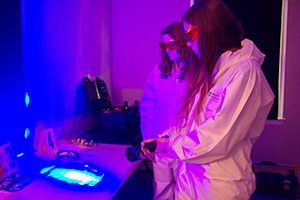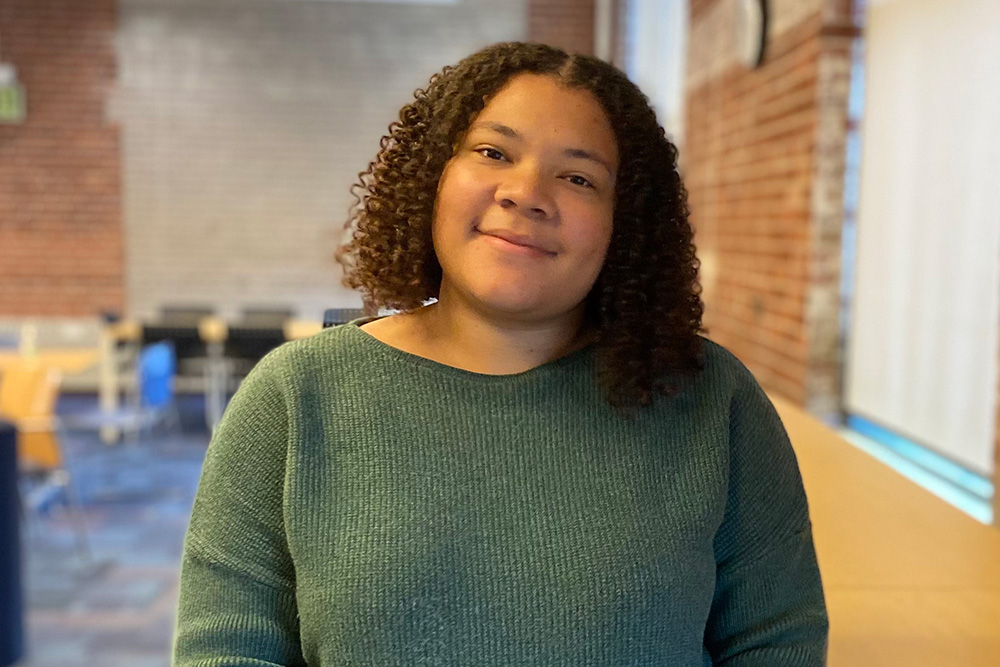UOIT’s new Crime Scene House delivering top-notch Forensic Science education
October 14, 2014

Students in the Forensic Science program at the University of Ontario Institute of Technology (UOIT) are enjoying unparalleled opportunity to hone their investigative skills inside one of the country’s most innovative teaching labs.
The university’s Faculty of Science is celebrating the re-launch of its Forensic Science teaching and learning facility known as the Crime Scene House (CSH). Formerly located on a property adjacent to Camp Samac in north Oshawa from 2007 to 2013, the university’s next generation of forensic scientists now investigates mock crime scenes inside and around a repurposed structure within the former Windfields Farm lands.
“The University of Ontario Institute of Technology is excited to provide this leading resource at the same time as the Forensic Science program marks accreditation by the Forensic Science Education Programs Accreditation Commission (FEPAC),” said Dr. Greg Crawford, Dean, Faculty of Science. “Our current and future students will be well-served by having access to one of the most unique facilities of its kind anywhere in North America.”
The Forensic Science program gained the prestigious accreditation from the Colorado Springs, Colorado-based Commission, an official standing committee of the American Academy of Forensic Sciences, in early 2014.
CSH supports the university’s program specializations in Forensic Biology, Forensic Chemistry, Forensic Physics and Forensic Psychology, as well as opportunities for study at the graduate level. Students receive hands-on training in the practical skills required to excel in a career involving forensic investigation, including learning to collect and analyze evidence such as biological fluids, fingerprints, cartridge casings and tool mark impressions.
“We are capable of creating mock cases of homicide, break and enter, shootings, hit-and-run accidents and suspicious deaths,” said Kimberly Nugent, Senior Lecturer, Faculty of Science. “Students using the Crime Scene House are exposed to a full spectrum of scenarios and the latest available technological tools used in the industry. These opportunities are complemented with the integration of tablet computers, specialized software, learning objects and digital single-lens reflex (SLR) cameras.”
“Leading-edge resources like the Crime Scene House gives our students a competitive advantage in the marketplace,” said Nugent. “This new milestone highlights the fact that our students are receiving the best scientific foundation possible as they progress toward a career in one of the forensic disciplines.”
About UOIT
The University of Ontario Institute of Technology (UOIT) advances the discovery and application of knowledge through a technology-enriched learning environment and the delivery of innovative market-driven programs responsive to the needs of students and industry. With more than 10,000 undergraduate and graduate students enrolled in 76 programs, UOIT promotes social engagement, fosters critical thinking and integrates outcomes-based learning experiences inside and outside the classroom. UOIT's commitment to accelerating economic growth and social innovation is realized through faculty research collaborations with leading organizations such as Ontario Power Generation, IBM, The Hospital for Sick Children (SickKids) and the Durham Regional Police Service. To find out more, visit uoit.ca.
Media Contact
UOIT Communications and Marketing
905.721.8668 ext. 6709
289.928.3653
communications@ontariotechu.ca



